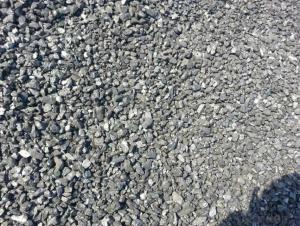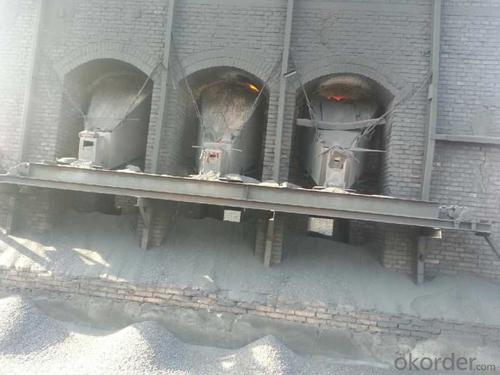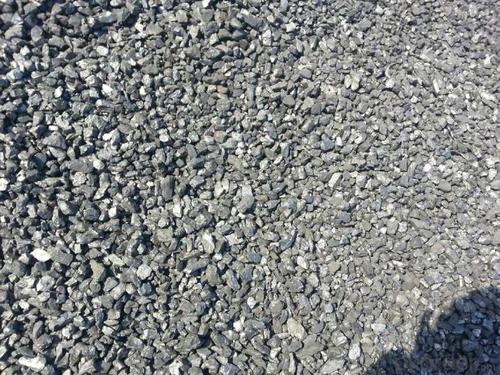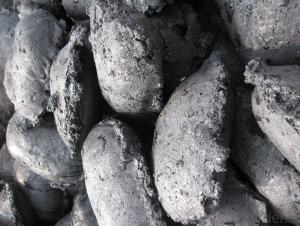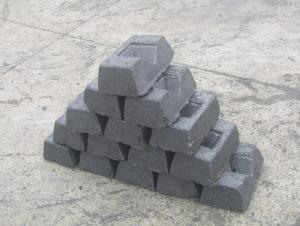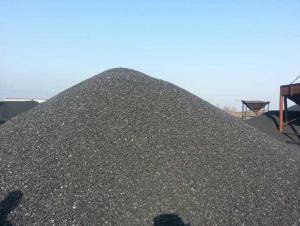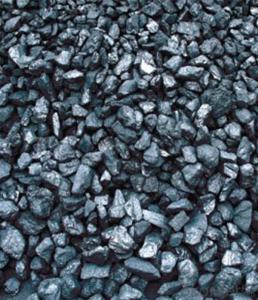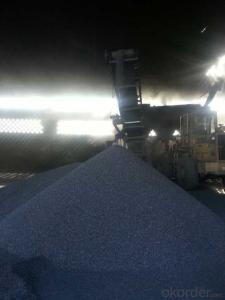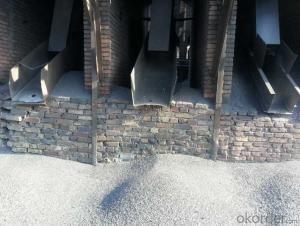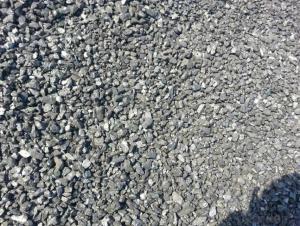Injection carbon FC94 with high and stable quality
- Loading Port:
- Tianjin
- Payment Terms:
- TT OR LC
- Min Order Qty:
- 20 m.t.
- Supply Capability:
- 3000 m.t./month
OKorder Service Pledge
OKorder Financial Service
You Might Also Like
Packaging & Delivery
25kgs/50kgs/1ton per bag or as buyer's request
Specifications
Calcined Anthracite
Fixed carbon: 90%-95%
S: 0.5% max
Size: 0-3. 3-5.3-15 or as request
It used the high quality anthracite as raw materials through high temperature calcined at over 2000 by the DC electric calciner with results in eliminating the moisture and volatile matter from anthracite efficiently, improving the density and the electric conductivity and strengthening the mechanical strength and anti-oxidation. It has good characteristics with low ash, low resistvity, low sulphur, high carbon and high density. It is the best material for high quality carbon products.
Advantage and competitive of caclined anthracite:
1. strong supply capability
2. fast transportation
3. lower and reasonable price for your reference
4.low sulphur, low ash
5.fixed carbon:95% -90%
6..sulphur:lower than 0.3%
General Specification of Calcined Anthracite:
| FC | 95 | 94 | 93 | 92 | 90 |
| ASH | 4 | 5 | 6 | 6.5 | 8.5 |
| V.M. | 1 | 1 | 1 | 1.5 | 1.5 |
| S | 0.3 | 0.3 | 0.3 | 0.35 | 0.35 |
| MOISTURE | 0.5 | 0.5 | 0.5 | 0.5 | 0.5 |
Pictures
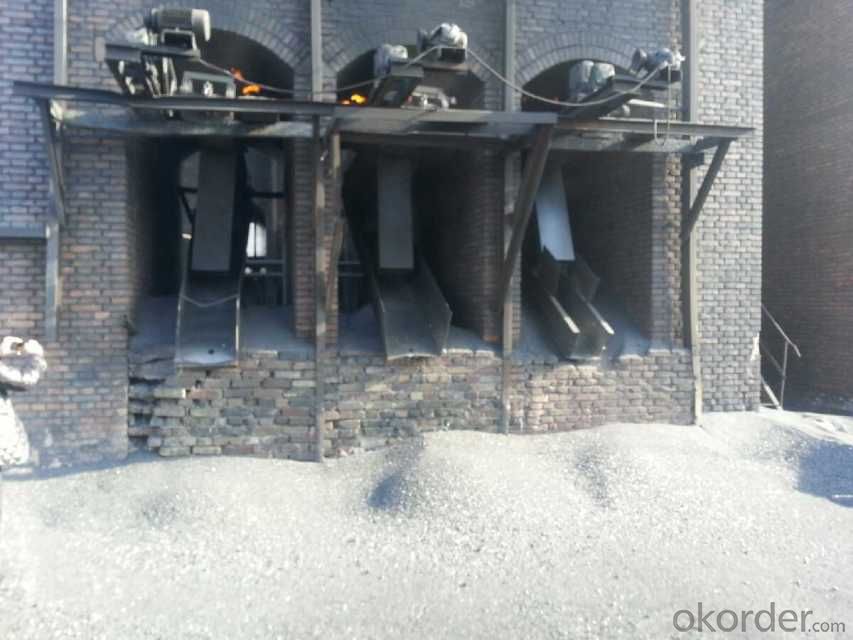
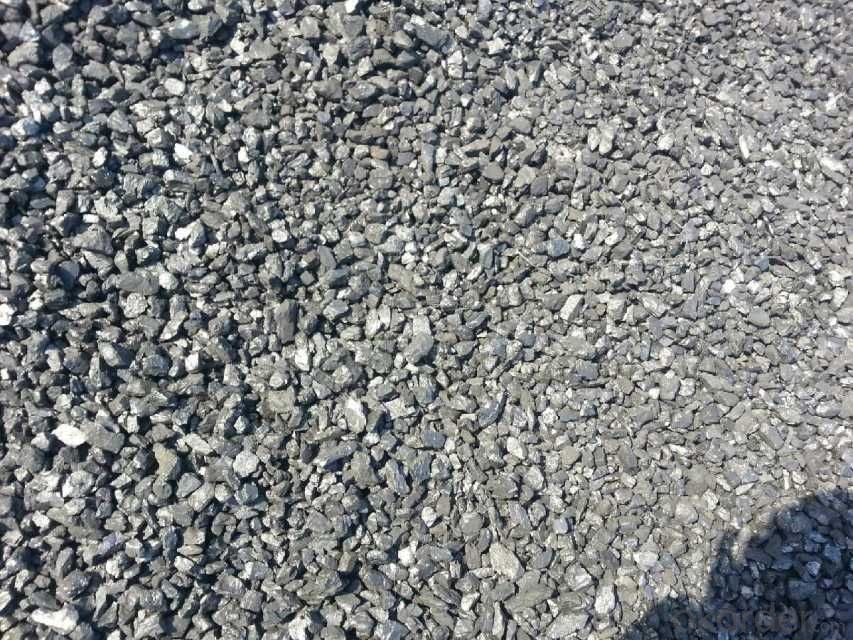
- Q: What is the density of carbon steel and alloy steel?
- Material name density g/cm3Grey cast iron 7.7.7Malleable iron 7.7.4Cast steel 7.8Industrial pure iron 7.87Plain carbon steel 7.85Quality carbon steel 7.85Carbon tool steel 7.85Free cutting steel 7.85
- Q: How about carbon content of coal ash?
- Ash, carbon content, ash, carbon content, ash, carbon content, ash, carbon content, determination, determination, determination, determination (determination, determination)1 sampling(1) in the different positions of the ash, 7-10 points are deep to collect ash and 2-3kg. When sampling, not intentionally pick or avoid channels of ash, namely as ash samples taken, regardless of its size, regardless of the depth of color, regardless of its hardness, as far as possible to obtain a fully representative sample.(2) slag made on thick steel plate clean, which is smashed big gray block, mixing evenly into a cone, flattened, with a shovel cut ten sub center line, which is divided into 4 parts, two samples of diagonal, the other half abandoned.(3) repeat (2) operation. Reduce the amount to several times, until the ash is reduced to about 50 grams. Bring the ash back to the laboratory. The abandoned ash is discharged back into the ash heap.2, sample preparation(1) the ash in the laboratory will be retrieved and dried in a heated air drying oven (about 1 hours) at 105-110 degrees centigrade.(2) crushing the dry ashes with the disc vibrating mill, and the fine ash powder is the analysis sample.
- Q: How does carbon impact soil health?
- The role of carbon in maintaining and improving soil health cannot be overstated. Carbon is a vital component of organic matter, which is crucial for fertile and productive soils. By decomposing plant and animal residues, carbon is introduced into the soil, resulting in better soil structure, increased water holding capacity, and improved nutrient availability. Soil structure is greatly influenced by carbon, as it binds with soil particles to form aggregates. These aggregates create pore spaces within the soil, allowing for improved aeration, water infiltration, and root penetration. The presence of these pore spaces encourages the growth of beneficial soil organisms like earthworms and microorganisms, which further contribute to soil health. In addition to enhancing soil structure, carbon also plays a critical role in improving the water holding capacity of soils. Organic matter, which is rich in carbon, acts like a sponge, holding moisture and preventing water runoff. This is especially important in regions with arid or drought-prone climates, where water scarcity is a concern. Increased water retention not only helps plants withstand dry periods but also reduces erosion and nutrient leaching. Furthermore, carbon is an essential nutrient for soil microbes. Microorganisms, such as bacteria and fungi, break down organic matter and release nutrients that plants require for growth. Carbon-rich soils provide an ideal environment for these microorganisms to thrive, resulting in greater nutrient availability for plants. Additionally, as microorganisms decompose organic matter, they release beneficial substances like enzymes and hormones that support plant growth and overall soil health. To summarize, the impact of carbon on soil health cannot be ignored. It improves soil structure, enhances water holding capacity, and promotes nutrient availability. Therefore, it is crucial to manage and increase carbon content in soils through practices like incorporating organic amendments, implementing cover cropping, and minimizing tillage. These actions can significantly benefit agricultural productivity and sustainability.
- Q: What's a carbon cloth to do as a fish pole?
- This is difficult, usually with a lathe like tool, by heating in the brush, layer by layer roll up, and finally cut off paint, baking
- Q: What are the effects of carbon emissions on the Arctic ecosystem?
- Carbon emissions have significant effects on the Arctic ecosystem, primarily due to the phenomenon of global warming. As carbon dioxide and other greenhouse gases are released into the atmosphere, they trap heat, leading to increased temperatures worldwide. However, the Arctic is particularly vulnerable to these effects due to its unique characteristics. One of the most significant impacts of carbon emissions on the Arctic ecosystem is the rapid melting of ice. Rising temperatures cause glaciers and ice sheets to shrink, leading to the loss of habitat for ice-dependent species such as polar bears, walruses, and seals. These animals not only rely on the ice for resting and breeding but also for hunting and finding food. With the reduction of their natural habitat, their populations are declining, impacting the delicate balance of the Arctic food chain. Additionally, the melting of ice results in rising sea levels, which can have cascading effects on coastal areas. Many Arctic communities, including indigenous peoples, are located near the coast and depend on the sea for their livelihoods. Increased erosion, flooding, and storm surges due to rising sea levels threaten their homes, infrastructure, and traditional ways of life. Furthermore, carbon emissions contribute to ocean acidification, a process in which the absorption of excess carbon dioxide by seawater leads to a decrease in its pH level. This acidification has detrimental effects on marine organisms such as shellfish, corals, and plankton, which struggle to build and maintain their calcium carbonate structures. These organisms are essential food sources for various Arctic species, including fish, seabirds, and marine mammals. The decline in their populations disrupts the intricate web of life in the Arctic and can have far-reaching consequences. Climate change caused by carbon emissions also disrupts the timing and patterns of seasonal events, such as the timing of plant growth, the migration of birds, and the availability of food resources. This mismatch can have severe consequences for species that rely on specific timing for reproduction, migration, and survival. Overall, the effects of carbon emissions on the Arctic ecosystem are profound and wide-ranging. The loss of sea ice, rising sea levels, ocean acidification, and disrupted ecological processes all contribute to the vulnerability of Arctic species and communities. Urgent action to reduce carbon emissions, mitigate climate change, and protect this fragile ecosystem is crucial for the long-term preservation of the Arctic.
- Q: The home wants to install electricity to warm the floor, the metal heating cable certainly won't use to have radiation, but is carbon system carbon fiber good or carbon crystal good?
- South Korea has a long history of electric heating, there is no domestic manufacturers have such technology! "Carbon crystal" is in the past two years, the domestic suddenly came out, it is estimated that dozens of homes!
- Q: How does deforestation affect carbon levels?
- Deforestation has a significant impact on carbon levels in the atmosphere. Trees play a crucial role in the carbon cycle by absorbing carbon dioxide (CO2) through photosynthesis and storing it in their trunks, branches, leaves, and roots. When forests are cleared or burned, this stored carbon is released back into the atmosphere as CO2, contributing to the greenhouse effect and climate change. Deforestation not only reduces the number of trees available to absorb CO2 but also disrupts the natural balance of the carbon cycle. Forests act as carbon sinks, meaning they absorb more CO2 than they release, helping to regulate the Earth's climate. When forests are cut down, the carbon stored in their biomass is rapidly released, exacerbating the problem of excess CO2 in the atmosphere. In addition to the immediate release of carbon, deforestation also impacts the long-term carbon storage capacity of the planet. Young trees and newly regrown forests have a lower carbon storage capacity compared to older, mature forests. Therefore, when forests are cleared and replaced with young vegetation or non-forest land uses, the ability to absorb and store carbon is greatly reduced. The consequences of increased carbon levels in the atmosphere are far-reaching. Carbon dioxide is a greenhouse gas that traps heat in the Earth's atmosphere, contributing to global warming and climate change. Rising temperatures have a cascade of effects, including increased frequency and intensity of extreme weather events, rising sea levels, and disruptions to ecosystems and biodiversity. To mitigate the impact of deforestation on carbon levels, it is crucial to prioritize sustainable forest management practices and reforestation efforts. Protecting existing forests and promoting afforestation and reforestation can help restore the carbon-absorbing capacity of the planet and contribute to global efforts in combating climate change.
- Q: How does carbon affect the quality of soil?
- Soil quality is greatly influenced by carbon, which plays a vital role in its determination. When dead plants and animals decompose, they release carbon into the soil, a process known as carbon sequestration. This process is crucial for maintaining the fertility and health of the soil. The presence of carbon in the soil is beneficial for the growth of microorganisms such as bacteria and fungi. These microorganisms contribute to the breakdown of organic matter and the recycling of nutrients. Their presence helps create a fertile soil environment, ensuring that plants can absorb essential nutrients. Moreover, carbon in the soil improves its structure and its ability to hold water. It acts like a sponge, allowing the soil to retain moisture, which is essential for the growth and survival of plants. Carbon also prevents soil erosion by binding particles together, reducing the risk of nutrient loss and water runoff. Additionally, carbon enhances the soil's capacity to store and release nutrients. It acts as a reservoir for elements like nitrogen, phosphorus, and potassium, gradually releasing them to plants over time. This nutrient cycling is vital for sustaining healthy plant growth and productivity. However, modern agricultural practices, including excessive tilling, overuse of synthetic fertilizers, and deforestation, have caused a significant decline in soil carbon levels. This loss of carbon negatively impacts soil quality, resulting in decreased fertility, increased erosion, and reduced water-holding capacity. To counteract these negative effects, it is essential to adopt sustainable agricultural practices that focus on carbon sequestration and soil conservation. These practices involve reducing tillage, incorporating cover crops, practicing crop rotation, and using organic fertilizers. By increasing carbon levels in the soil, we can improve its quality, promote plant growth, and ensure the long-term sustainability of our agricultural systems.
- Q: How is carbon used in the production of fuels?
- Fuels production heavily relies on carbon, which serves as the primary element in fossil fuels like coal, oil, and natural gas. These fuels are formed through the decomposition of ancient plants and animals over millions of years, a process called carbonization. Carbonization involves subjecting organic materials to prolonged exposure to high temperature and pressure, resulting in the formation of hydrocarbon-rich substances. For instance, coal consists mainly of carbon, with traces of other elements. When coal is burned, the carbon reacts with oxygen, releasing heat energy. This heat can be utilized to generate steam, which then powers turbines for electricity production or industrial engines. Similarly, oil and natural gas, which are predominantly carbon-based, are extracted from underground reservoirs. These hydrocarbons can undergo refining to produce various fuel types such as gasoline, diesel, and jet fuel. The combustion of these fuels in engines or power plants releases energy for transportation and electricity generation. Aside from fossil fuels, carbon plays a crucial role in the production of alternative fuels like biofuels. Biofuels are derived from renewable sources such as plants, algae, or agricultural waste. The carbon within these organic materials can be converted into ethanol or biodiesel through processes like fermentation or transesterification, respectively. These biofuels can then be used as substitutes for conventional fuels, reducing greenhouse gas emissions and lessening reliance on non-renewable resources. In conclusion, carbon is a vital component in fuel production, whether obtained from fossil fuels or renewable sources. Its combustion generates energy that powers various sectors including electricity, transportation, and industry. Nevertheless, it is crucial to explore and adopt sustainable alternatives like biofuels and renewable energy sources to mitigate the negative environmental impacts associated with carbon emissions.
- Q: What is carbon dating?
- Carbon dating is a scientific method used to determine the age of organic artifacts, such as ancient human remains or archaeological objects. It relies on the fact that all living organisms contain a small amount of radioactive carbon-14, a rare isotope of carbon. When an organism dies, it no longer takes in carbon-14, and the amount of this isotope slowly decreases over time through radioactive decay. By measuring the ratio of carbon-14 to carbon-12 in a sample, scientists can estimate how long it has been since the organism died. This technique provides accurate age estimates up to around 50,000 years, making it particularly valuable for dating artifacts from prehistoric times. Carbon dating has revolutionized the field of archaeology and has been instrumental in understanding the timelines of human history and the evolution of various civilizations.
Send your message to us
Injection carbon FC94 with high and stable quality
- Loading Port:
- Tianjin
- Payment Terms:
- TT OR LC
- Min Order Qty:
- 20 m.t.
- Supply Capability:
- 3000 m.t./month
OKorder Service Pledge
OKorder Financial Service
Similar products
Hot products
Hot Searches

